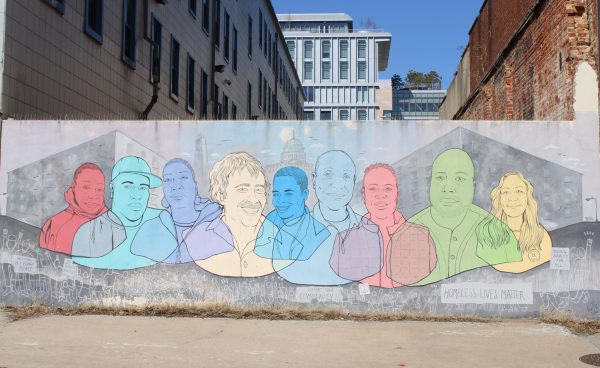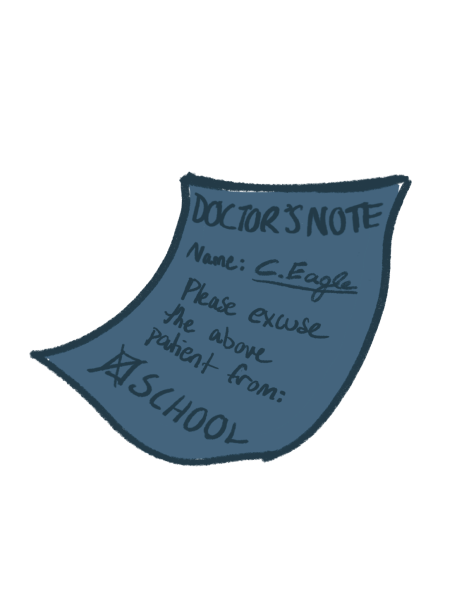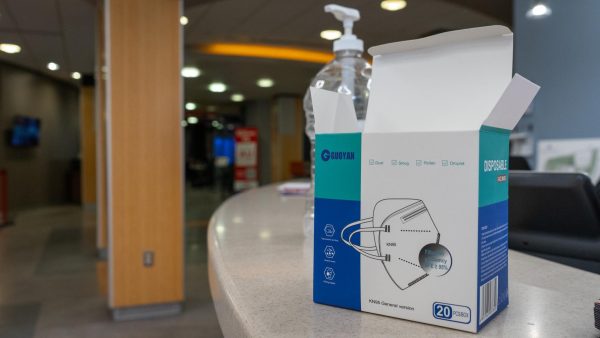Reflections on HIV/AIDS in Cape Town and DC
My name is Sarah. I was born in Washington, DC. I am 42 years old. I still live in the same neighborhood where I was born. I am married with two children.
These women are living 7,907 miles apart, unaware of their link: they are both HIV-positive.
When I think of South Africa, images that come to mind are the World Cup, tin shacks and malaria. When I think of DC, I think of power, a hub of activity and important people in suits working to change ideas into laws to transform the nation. These are the fabrics of two distinct cities with on common thread: HIV/AIDS.
I spent two weeks this past December in Cape Town as a participant in an AU alternative break, studying the rights of HIV-positive patients. I was unsure of what to expect, but I was aware of the immensity of the problem: there are approximately 5.6 million people living with HIV and AIDS in South Africa — more than any other country in the world.
For a disease to be considered an epidemic, it must affect at least one percent of the population. The frightening reality is that HIV affects 10.8 percent of South Africa’s population. It is estimated that next year, 400,000 people will die from AIDS-related illnesses.
South Africa is unfortunately a perfect breeding ground for the virus. One frustrated nurse in a local clinic, Gloria Mrwetyana, explained the plethora of problems contributing to the epidemic: “There is tuberculosis from overcrowded communities, patients may be unable to pay for the taxi or bus fare to come to the clinic and get tested or treated, they may not be able to refrigerate their medications, there is no one to bring children or the elderly to the clinic, there is poor sanitation, unclean water, poorly cooked food, unprotected sex, many rape cases and high drug use.” Doctors are pressed by the mountain of responsibilities and the inability to tackle each problem every time.
But this virus is not merely a scourge existing thousands of miles away. DC faces a similar battle: one out of every 20 adults is HIV-positive, over ten times the national average. In fact, DC has the highest HIV rate of any US city. But, unlike in South Africa, where AIDS has become a part of everyday reality, it is easy to remain oblivious to this raging epidemic in DC.
Tools and knowledge are available to combat this disease. In fact, according to Reuben Granich, an HIV/AIDS researcher at the World Health Organization, if everyone in the world was tested for HIV, the disease could be eliminated globally in 50 years. Why does this disease, which has the potential to be erased from medical history in our lifetime, still rage on? The root of the problem is the stigma associated with being tested for HIV, being HIV-positive and even for using condoms.
I experienced this stigma first-hand while observing Mrwetyana, a nurse at a local clinic in Cape Town. She took the medical and personal histories of each of her HIV-positive patients and came across some heart-wrenching stories. The first patient was a 42-year-old woman, well-dressed in a purple blouse and with a successful job in — ironically — a pharmaceutical company that produces HIV medication. Mrwetyana inquired if her family knew about her HIV-positive status. The woman told the nurse she was abused by her husband, who told her to keep her sexually transmitted disease quiet. When she finally divorced him after years of abuse, her family shunned her for bringing dishonor to the family. She is currently raising two children on her own without any support from her family.
The next patient was a pretty young woman who stopped taking her HIV medication because she was too embarrassed to do so in the presence of her family. She said she had just given birth to an HIV-positive child. Her calm demeanor as she shared this news was shocking, especially because it was preventable. There is medication available for pregnant women that reduces the risk of transmitting HIV to their infant to only two percent.
Domestic abuse perpetuates the disease further because when a woman asks her partner to use a condom, he assumes there is mistrust in the relationship. We met with an incredible group of women who formed a nonprofit organization called Sisters4Sisters, which aims to raise awareness about domestic violence and its impact on the spread of HIV. The organization offers support groups, emergency accommodation and shelter for women that need it.
Stigma and domestic abuse are part of the vicious cycle of HIV in DC, too. Dr. Sohail Rana, a member of Howard University’s Department of Pediatrics, believes the “stigma associated with HIV is now worse than the disease itself.” In an appearance on AU’s radio station, WAMU 88.5, she talked about how this stigma killed her eighteen-year-old patient, Angel. Angel contracted the disease at birth and with the proper medication, she could have lived a longer life. But her family made her feel dirty, rejected her and left her to face the disease alone. She refused to take her medication, and as a result, her HIV progressed to AIDS, ultimately resulting in her death. “There’s much talk about prevention, but almost none about the stigma related to HIV. Unless we address that stigma, it is unlikely that prevention efforts will succeed,” Rana said.
Recent survey results about DC residents’ perceptions of HIV/AIDS are shocking: 30 percent said that they would not feel comfortable sitting next to someone with HIV on a bus; 20 percent said they would be uncomfortable sending their child to a school with an HIV-positive student.
How can we acknowledge this stigma and overcome it? First, we need to realize that Cape Town and DC are not so different. The US heavily funds HIV research in South Africa, but South Africa seems to be much more active than the US in combating HIV and the stigmas associated with it. Condoms are distributed at clinics and public facilities, billboards are displayed encouraging people to get tested, and radio stations urge listeners to begin the new year by finding out their HIV status. But the US, AU sociology professor and alternative break advisor Bette Dickinson stated, “is advanced at hiding up. HIV is a silent killer that we don’t talk about. This must not be swept up under the rug.” Instead of viewing our relationship with South Africa as one of charity, the US needs to see the relationship as a partnership and learn from South Africa’s active approach to HIV awareness.
While the US has more generalized goals, conceived with the hope of helping the nation as a whole, South Africa has more specific, concrete goals with the intention of helping individual communities and people. They have more grassroots organizations that are focused on specific aspects of HIV, like creating vaccinations or helping marginalized HIV-positive groups like mothers and senior citizens. The collaboration of these groups is transforming communities, creating a strong movement against HIV. A US-South Africa partnership can serve to actually defeat the disease, with each country working together and learning from the other.
HIV is a fairly new disease — it has been around for fifty years and both Cape Town and DC have come far in fighting it. Imagine how much further we could progress in the next decade if we band together.
Illustration by Hannah Karl.












